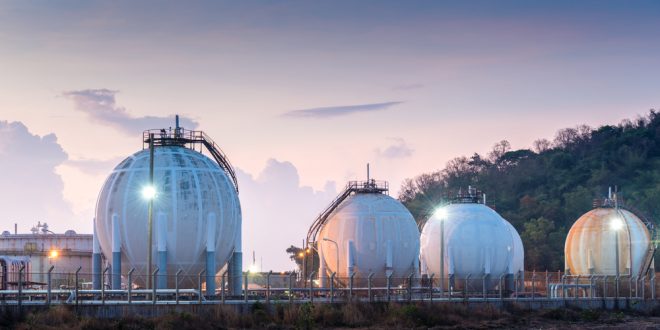Russia’s wealth of commodities seems too big to sanction. Russia’s vast energy exports have been subject to unprecedented sanctions imposed by the Western nations in response to the invasion of Ukraine.
In 2020, Russia produced 638.5 billion cubic meters of natural gas, decreasing the volume by approximately 40.5 billion cubic meters compared to the previous year.
Europe’s gas market remains volatile amid tensions between Moscow and the West over Ukraine, a key route for Russian gas, as Gazprom, source for 40% of Europe’s needs, sends gas under its contractual obligations but does not add much more.
Exports
Kremlin-controlled Gazprom had likely missed its target on gas exports to Europe last year as its total gas exports outside the former Soviet Union increased by 5.8 billion cubic metres (bcm) to 185.1 bcm. This included 10 bcm exported to China, while it had initially planned to deliver to Europe 183 bcm in 2021.
This was down from record-high 201 bcm supplied to Europe in 2018, but still the fourth highest annually in Gazprom’s history. Russia also raised gas pipeline supplies to Turkey by 63% in 2021 and to Germany by 10.5%. Exports have also risen to Italy by 20.3%.
Gazprom’s 2021 total natural gas production rose by 62.2 bcm to 514.8 bcm, its highest in 13 years, while domestic gas supplies rose by 31.9 bcm to 257.8 bcm, more than half the total production.
Urengoy-Uzhgorod
Part of the Ukrainian gas pipeline network with annual capacity of more than 100 bcm. Supplies travel via Slovakia and Hungary.
Russia and Ukraine signed a new five-year transit deal on Dec. 31, 2019, with Russia pledging to ship 65 bcm of gas via Ukraine in 2020 and 40 bcm annually from 2021 to 2024.
Ukraine has refused to buy Gazprom’s gas directly since 2015 after Moscow’s annexation of Crimea and pro-Russian insurgency in its eastern regions.
Gazprom cut its daily volume of gas transit via Ukraine to Europe to about 53 million cubic metres (mcm) in January 2022. The volume stood at an average 124.6 mcm in 2021, according to Ukraine’s pipeline operator.
Yamal-Europe
Annual capacity is 33 bcm. The pipeline runs from the Arctic region of Yamal, rich with hydrocarbons, via Belarus, Poland and terminates in eastern Germany.
The route has been working in a reverse mode, shipping gas from Germany to Poland since Dec. 21.
Gazprom did not book capacity to export gas via the Yamal-Europe pipeline in the second and third quarter, as well as for February and March.
But Germany’s economy minister Robert Habeck recently floated the possibility of letting the remaining reactors operate longer.
The technical, legal and political hurdles would be formidable and nuclear power wouldn’t be able to fully replace Russian gas. Germany is considering ways to reduce its dependency on Russian gas, including by accelerating construction of terminals to receive non-Russian liquefied natural gas.
Nord Stream 1
This pipeline which has been delivering Russian gas for more than a decade, is currently Germany’s gas lifeline. The lion’s share of Russian gas comes into the country via that pipeline, so halting it would mark a serious blow to the German economy. Nord Stream 2 was different because it wasn’t in service yet and so far, Germany hasn’t needed additional gas supplies.
Turkstream
Another Black Sea pipeline to Turkey, this has two lines with annual capacity of 15.75 bcm each. One line is designed to feed the Turkish domestic market while the other exports gas to southern Europe.
Russia’s natural gas exports to Germany via the existing Nord Stream pipeline crossing the Baltic Sea totalled 59.2 bcm in 2021, in line with record volumes a year earlier.
Blue Stream
This pipeline goes to Turkey via the Black Sea and has annual capacity of 16 bcm.
Gazprom set up the ESP in 2018 for gas sales to Europe in addition to the existing long and mid-term contracts. It sold more than 40 bcm of gas on the platform in the first two years.
Gazprom Export, the exporting arm of Gazprom, has not offered natural gas for delivery on ESP since late August. Russia is a big player in the world’s commodity markets. It is one of the world’s largest exporters of some of the most vital raw materials including among several things natural gas which is the focus of this report. Russia is the world’s third-largest producer of oil and one of the biggest producers of natural gas. A ban would send its customers scrambling for any kind of alternative at any price.
Russian and Ukrainian officials exchanged warnings about the risk to gas transit infrastructure, with each side seeking to distance itself from responsibility for any disruptions.
Russia took control of two of the four stations that pump natural gas toward Europe and can guarantee the security of supplies to those facilities, according to the Russian Energy Ministry. Therefore “any disruptions or provocations” at those controlled by Ukraine would be that country’s responsibility, Russian Deputy Energy Minister Pavel Sorokin said in a statement.
The US administration imposed a ban on all Russian oil, natural gas and coal imports. Similarly, London said the UK would phase out Russian oil imports by the end of 2022 and explore ways of ending natural gas imports too.
EU leaders made clear this week that the bloc cannot yet join the United States in banning Russian energy for fear of the impact that would have on households and businesses already grappling with record high prices for fuel and heating. Europe gets much more of its energy from Russia than either the United States or United Kingdom.
In 2021, the EU imported 155 billion cubic metres of natural gas from Russia, accounting for around 45% of EU gas imports and close to 40% of its total gas consumption.
Ukraine has banned some cross-border gas trading activities but has said it wouldn’t restrict the flow of Russian gas to Europe. Inside Ukraine, however, some secondary distribution pipelines for domestic consumption have suffered damage due to shelling and air strikes, according to the country’s gas pipeline operator, Gas TSO of Ukraine. In a statement, it said it was forced to halt supply to several regions, leaving hundreds of thousands of inhabitants without gas.
Germany is heavily reliant on Russian natural gas, and imports 35% of its gas from there. It had intended to secure even more Russian gas through the Nord Stream 2 pipeline, but that project has been put on hold indefinitely in light of the war in Ukraine.
Supply disruptions from Russia, as well as European smelters faced with punitively high energy prices cutting back production, are exacerbating acute supply constraints, according to Saxo Bank analysts. De-escalation in the Russia-Ukraine war may not offer much price relief either as several factors have been applying upward pressure.
What is the status of this mutual dependency?
Has there been any interruption of gas supplies because of the war? So far: “No”. Russia has been delivering gas to Europe to fulfill long-term contracts, according to buyers such as Uniper and RWE in Germany and traders in the Baltics.
But since last year, Russia has only been delivering the contractual volumes, saying no buyer had asked for additional volumes and that it didn’t have much spare gas itself. This has caused prices to spike because, in the past, Russia was usually delivering extra supplies. Prices also rose because other major producers struggled to deliver more gas amid very tight global markets and rising demand due to economic recovery from the pandemic.
Has Russian gas that flows through ukraine to europe been affected by the war? No. Volumes of Russian gas delivered at the Slovakian border, after a roughly 800-mile journey through Ukraine, have, in fact, increased since the war began, according to data from Slovak gas transport company Eustream. Gas prices on the spot market have risen sharply, making Russian gas, which is largely sold through long-term contracts, more attractive to European buyers, analysts say.
What will happen to the Nord Stream 2 Russian gas pipeline project? Courthouses are likely the next stop for the promoters of Nord Stream 2, who may try to challenge the decision last month by Germany’s Chancellor Olaf Scholz to halt certification of the pipeline. The project would have doubled the delivery capacity of the existing huge undersea Nord Stream 1 gas pipeline from Russia to Germany. The $11 billion Nord Stream 2 project is a conduit running offshore along the same path between Russia and Germany. It is finished, but unless it is certified by Germany, it is possible it will remain unused, rusting slowly in the Baltic Sea and turning into a loss for its owner, Russia’s energy giant Gazprom, as well as the five Western energy companies that shouldered its costs.
Why hasn’t Russia retaliated by cutting off gas shipments to the west?
The Kremlin has said it will respond to Western sanctions but hasn’t said how. But it has no immediate self-interest in cutting off gas shipments as this would deprive Russia of much needed revenue and would accelerate moves by Western countries to wean themselves off Russian gas.
For decades, the Kremlin has sought to cast itself as a reliable gas supplier. Late last year, when Belarus threatened to cut off pipelines running through its territory in response to Western sanctions against Minsk, Moscow rushed to reassure its European clients that it would meet all present and future delivery commitments.
Europe knows it needs to act fast to reduce the potential for Moscow to use energy as a weapon in the escalating economic warfare unleashed by the Russian invasion of Ukraine.
Russian deputy prime minister Alexander Novak said Monday Russia could cut off the supply of gas to Germany via the Nord Stream 1 pipeline in retaliation for Berlin blocking the new Nord Stream 2 pipeline project.
 Noor Trends News, Technical Analysis, Educational Tools and Recommendations
Noor Trends News, Technical Analysis, Educational Tools and Recommendations





